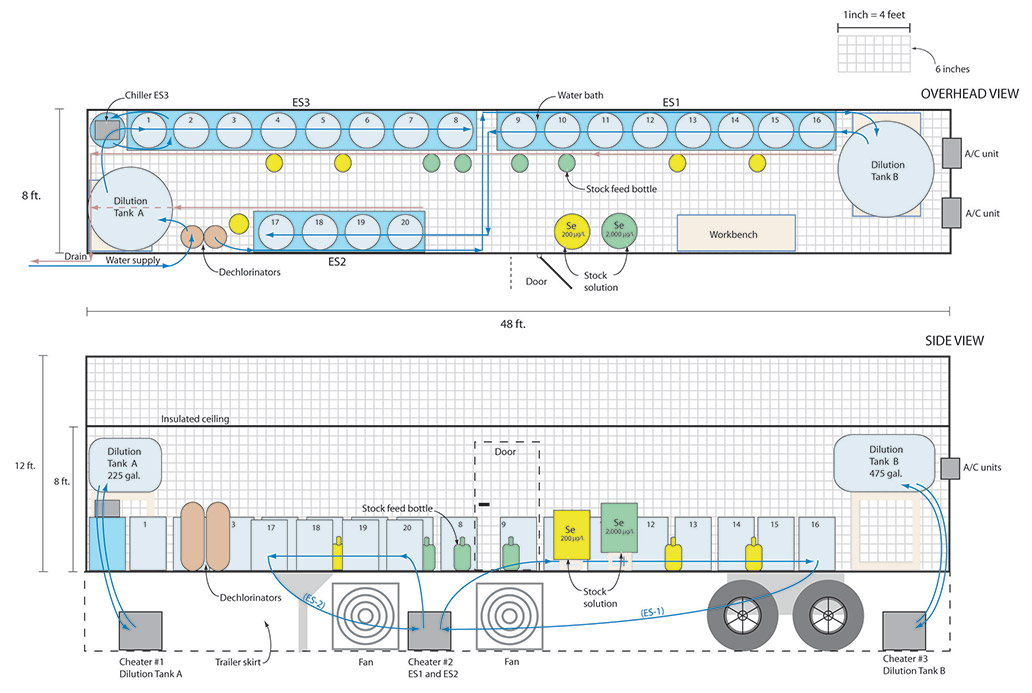Selenium Criterion Technical Support
 click image to enlarge
click image to enlargeThe goal of this project was to determine the effect levels of selenium exposure on bluegill tissue over a simulated winter season at two temperature regimes. GLEC used a selenium-enriched diet that had been accumulated in an oligochaete, Lumbriculus variegatus, by feeding it selenized-yeast to get an estimate of an effect level at two temperature regimes: 20°C decreasing to 4°C and 20°C decreasing to 9°C. Three separate exposure systems were employed to achieve the study objectives. Two of the exposure systems (1 and 3) were comprised of six selenium treatments (and an appropriate control) with the objective of obtaining a dose response relationship sufficient to derive a sound EC value (e.g., EC10, EC20). The third exposure system exposed juvenile bluegill to aqueous selenium and seleno-L-methionine in TetraMin under a 20 to 4°C temperature regime. Juvenile bluegill sunfish were exposed to each treatment concentration under flow-through conditions for a total of 182 days. They were fed selenium-laden Lumbriculus worms at a rate of 4% of the fish body weight per day. Selenium levels were being monitored in worm and bluegill tissues. Effect levels for selenium in bluegill tissue were determined for each temperature treatment at the end of the 182 day study.

